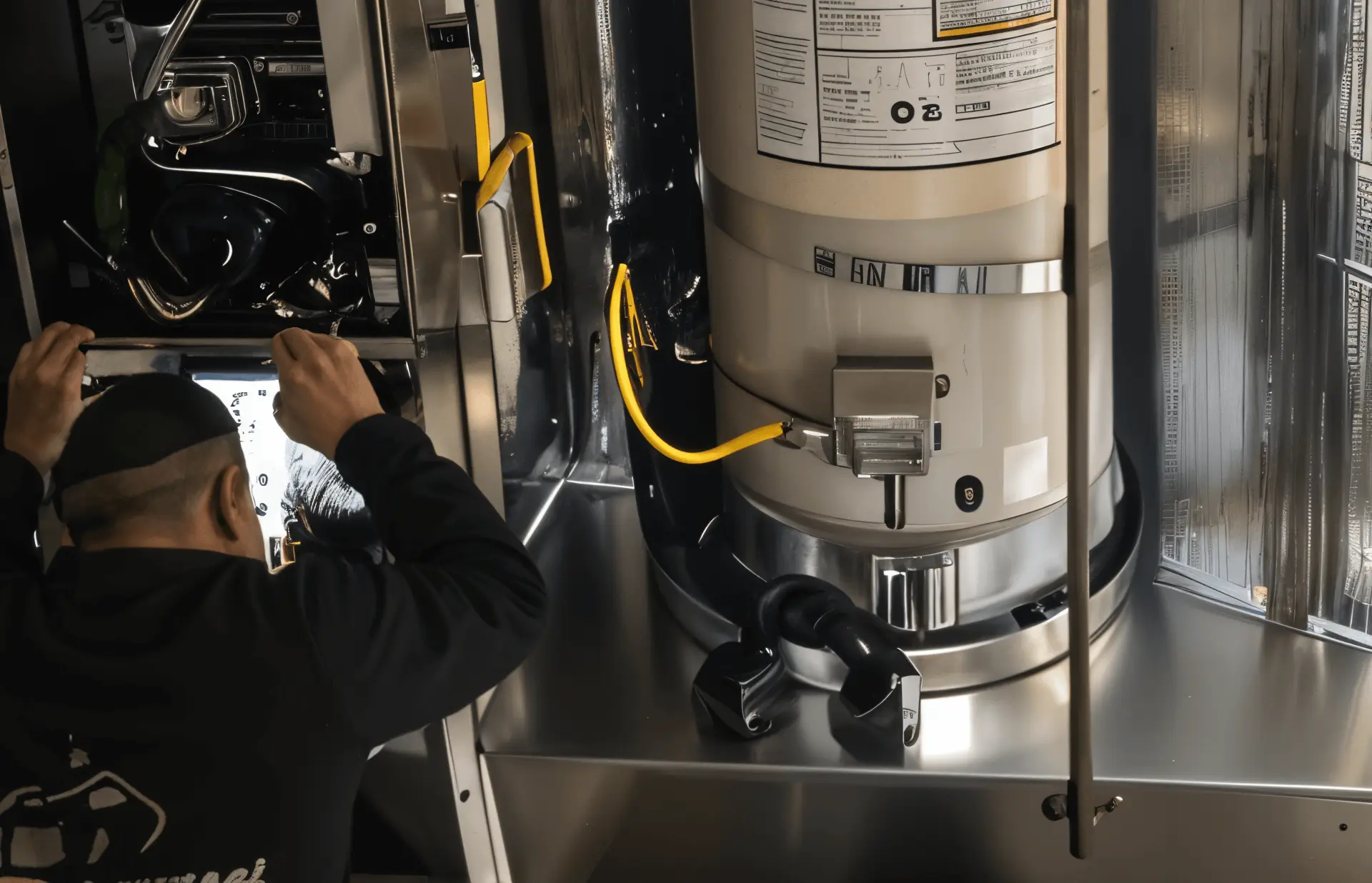For homeowners, a furnace is one of the most essential appliances in a home. It provides warmth, comfort, and safety during cold months. Naturally, many ask: “How long does a furnace last?” or “What is the average lifespan of a furnace?”
The answer depends on the type of furnace, its quality, how often it is used, and how well it’s maintained. In this guide, we’ll cover gas, electric, and high-efficiency furnaces, signs that your furnace is nearing the end of its life, and tips to maximize its longevity.
Average Lifespan of a Furnace
The average lifespan of a furnace ranges from 15 to 30 years, depending on its type and usage. Here’s a breakdown:
- Gas furnaces: 15–20 years
- Electric furnaces: 15–20 years
- Oil furnaces: 20–30 years
- High-efficiency furnaces: 12–20 years
Factors affecting lifespan include installation quality, maintenance, frequency of use, and local climate conditions. Furnaces in colder regions or with heavy daily usage may reach the end of their life sooner.
How Long Do Gas Furnaces Last? (Gas Furnace Life Expectancy)
Gas furnaces are the most popular in U.S. homes, but their life expectancy varies:
- Average lifespan: 15–20 years
- Factors affecting longevity:
- Usage frequency: In areas with harsh winters, furnaces run longer, leading to more wear and tear.
- Maintenance: Regular annual inspections, cleaning, and filter changes can extend life.
- Fuel quality and installation: Poor gas quality or improper installation can reduce lifespan.
Pro Tip: Even a 15-year-old gas furnace can operate efficiently if properly maintained, but after 20 years, replacement is often the safer and more cost-effective option.
How Long Does an Electric Furnace Last?
Electric furnaces generally have a similar lifespan to gas units, typically 15–20 years, but they differ in operation:
- Advantages: Fewer moving parts and no combustion mean less mechanical failure.
- Considerations: Electricity costs can be higher; the heating elements may still wear out over time.
- Maintenance tip: Keep the system clean and ensure proper airflow to maximize longevity.
In mild climates, electric furnaces may even outlast gas units because they don’t work as hard.
Do High-Efficiency Furnaces Last Longer?
Many homeowners ask: “Do high efficiency furnaces last longer?” The answer is nuanced:
- Typical lifespan: 12–20 years
- Why lifespan may be shorter: More complex components like condensate lines, secondary heat exchangers, and electronic sensors can fail if not maintained.
- Why they are still a good choice: They save on energy bills, sometimes $500–$1000 per year, offsetting earlier replacement costs.
High-efficiency furnaces save energy, but it’s important to understand AFUE ratings to know how efficiency impacts longevity and operating costs.
How Often Should a Furnace Be Replaced?
Replacement isn’t just about age—it’s about performance, efficiency, and cost:
- General guideline: Replace every 15–20 years (oil units can last 25–30 years).
- Red flags for replacement:
- Frequent repairs costing more than 40% of a new furnace
- Rising energy bills despite normal usage
- Uneven heating or persistent cold spots
- Strange noises or unusual odors
- Safety concerns like carbon monoxide alarms
Taking a proactive approach ensures you’re not caught in the cold during winter emergencies.
How Long Should a New Furnace Last?
A new furnace installed today can last 20 years or more, provided it’s:
- Professionally installed
- Maintained annually
- Properly sized for your home
Modern furnaces come with warranties:
- Heat exchanger warranty: 10–20 years
- Labor warranty: 1–10 years
- Manufacturer guarantees for major components
Proper care can extend the life of your furnace by 3–5 years beyond manufacturer estimates.
Factors That Influence Furnace Lifespan
Several factors determine how long your furnace will last:
- Build quality and brand: Reputable brands often use higher-quality components.
- Installation quality: Poor installation can lead to early failures.
- Usage patterns: More daily hours shorten lifespan.
- Maintenance habits: Regular tune-ups, cleaning, and filter replacement are critical.
- Environmental conditions: Dust, humidity, and corrosive air can increase wear.
Following expert advice on how to keep your furnace running efficiently in winter can reduce wear and tear, especially in colder climates.
Signs Your Furnace Is Nearing the End
Recognizing when your furnace is nearing retirement can save money and prevent emergencies:
- Rising heating bills
- Frequent repairs
- Uneven home heating
- Loud banging or rattling noises
- Carbon monoxide alarm alerts
- Yellow pilot light or flame irregularities
Tips to Extend the Lifespan of Your Furnace
Proactive homeowners can extend furnace life with these tips:
- Scheduling regular furnace servicing with a certified professional is one of the most effective ways to extend your system’s lifespan.
- Replace air filters regularly and perform proper cleaning of your furnace to ensure proper airflow and reduce strain on the system.
- Use a programmable thermostat to reduce workload
- Maintain clean and clear ductwork
- Control indoor humidity to reduce stress on components
FAQs
Q1: How long does a house furnace last on average?
Most furnaces last 15–30 years, depending on type and maintenance.
Q2: Can a furnace last 30 years?
Yes, especially oil furnaces or units in mild climates with proper care.
Q3: Is it worth repairing a 20-year-old furnace?
Generally, no. Replacement is safer and more cost-effective.
Q4: Do expensive furnaces last longer?
Premium brands may last longer due to higher-quality parts, but maintenance remains the key factor.
Q5: How often should a furnace be replaced?
Usually every 15–20 years, or sooner if repairs and inefficiency make continued use costly.
Conclusion
The average lifespan of a furnace ranges from 15–30 years, depending on type, brand, maintenance, and local conditions. Gas and electric units typically last 15–20 years, oil furnaces 20–30 years, and high-efficiency models 12–20 years.
Understanding your furnace’s age, performance, and maintenance history helps you decide whether to repair or replace, saving money and avoiding inconvenient breakdowns. Regular inspections, proper maintenance, and timely replacement ensure reliable home heating for decades.









